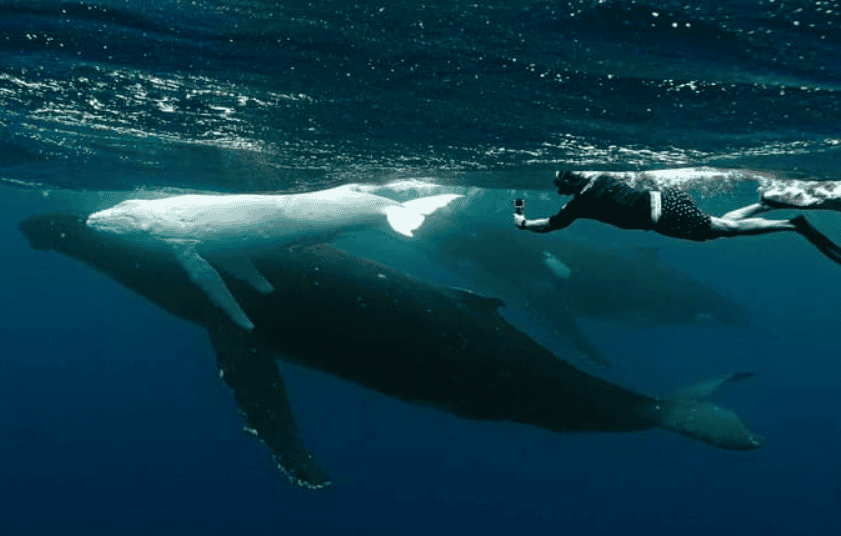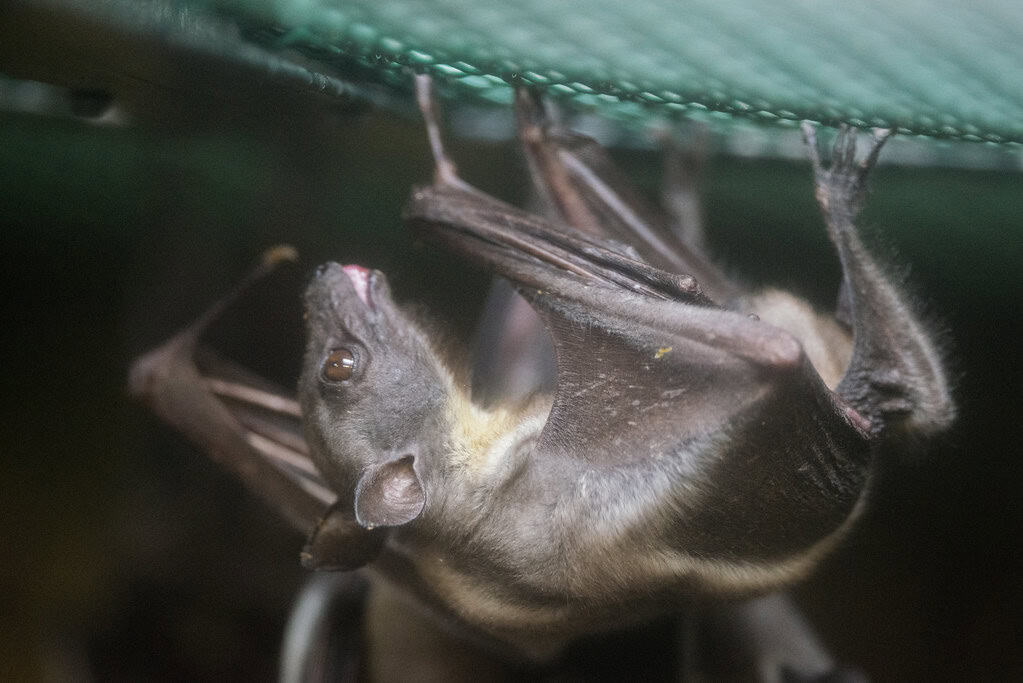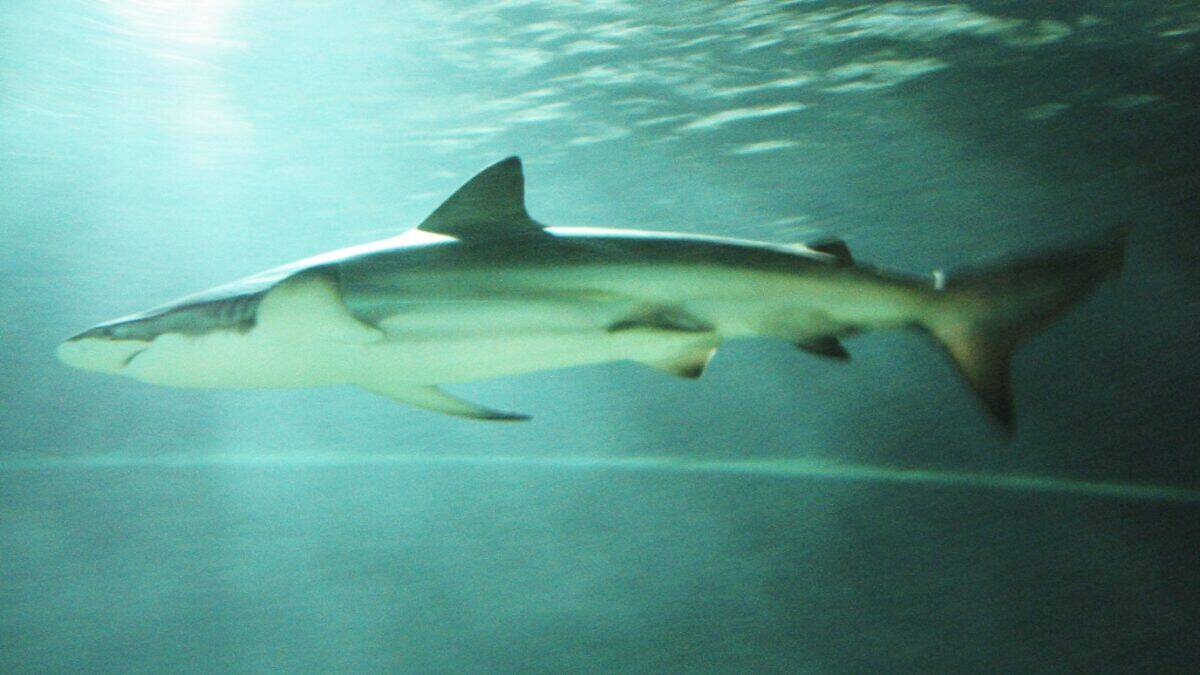Every year, billions of animals embark on remarkable journeys across our planet, traveling thousands of miles in search of food, favorable climates, or breeding grounds. These epic migrations represent some of nature’s most spectacular phenomena, showcasing the incredible resilience and navigational abilities of various species. From the depths of the ocean to the highest skies, these migratory patterns have evolved over millennia, often following ancient routes that predate human civilization. This article explores 13 of the world’s most extraordinary animal migration journeys, highlighting the remarkable distances traveled, challenges overcome, and the sometimes mysterious navigational mechanisms that guide these creatures on their way.
Arctic Tern The Pole-to-Pole Marathon Flier

The Arctic tern holds the record for the longest migration of any animal on Earth. These small but mighty birds travel from their Arctic breeding grounds to the Antarctic and back again each year, covering an astounding 44,000 miles (70,800 kilometers) annually. Unlike most migratory species that take the most direct route, Arctic terns follow a winding, S-shaped pattern across the Atlantic Ocean, taking advantage of global wind systems to conserve energy. Their incredible journey means they experience two summers each year and more daylight than any other creature on the planet. What makes this migration even more remarkable is that Arctic terns can live up to 30 years, meaning a single bird may fly the equivalent distance of three round trips to the moon during its lifetime. Using the sun and Earth’s magnetic field for navigation, these birds exemplify nature’s extraordinary navigational capabilities.
Monarch Butterfly The Multi-Generational Marvel

The monarch butterfly migration represents one of nature’s most fascinating phenomena, as it spans multiple generations to complete a full cycle. Each fall, monarchs from eastern North America travel up to 3,000 miles (4,800 kilometers) to reach specific overwintering sites in central Mexico’s oyamel fir forests. What makes this journey utterly unique is that no single butterfly completes the entire round trip. The butterflies that begin the northward journey in spring mate and lay eggs along the way, with their offspring continuing the migration. It takes three to four generations to reach the northern range, and then an extraordinary “super generation” emerges in late summer. These special monarchs live eight times longer than their parents and grandparents and make the entire southern journey back to Mexico, despite never having been there before. Scientists believe they navigate using a combination of the sun’s position and Earth’s magnetic field, representing one of the most remarkable examples of genetically programmed behavior in the animal kingdom.
Wildebeest The Great Migration Spectacle

The Great Migration of wildebeest across the Serengeti-Mara ecosystem of Tanzania and Kenya stands as one of the most visually dramatic wildlife spectacles on Earth. Approximately 1.5 million wildebeest, accompanied by hundreds of thousands of zebras and gazelles, travel in a continuous clockwise circle of about 1,800 miles (2,900 kilometers) each year in search of fresh grazing and water. This massive movement of animals creates iconic scenes as the herds cross crocodile-infested rivers, particularly the treacherous Mara River, where dramatic life-and-death struggles unfold. Predators such as lions, cheetahs, and hyenas follow the herds, creating a complete ecosystem on the move. The migration is not a single event but a perpetual cycle driven by rainfall patterns, with calving season in the southern Serengeti (January-March) representing another remarkable aspect of this journey, when approximately 400,000 wildebeest calves are born within three weeks. This synchronized birth strategy evolved to overwhelm predators, ensuring that at least some calves survive to continue the great migration cycle.
Humpback Whale The Oceanic Long-Distance Champion

Humpback whales undertake one of the longest mammalian migrations on Earth, traveling up to 5,000 miles (8,000 kilometers) each way between their tropical breeding grounds and polar feeding areas. These 40-ton giants navigate with remarkable precision across featureless ocean expanses, returning to the same locations year after year. Interestingly, humpbacks in the northern and southern hemispheres migrate at opposite times, with northern populations traveling to warm waters in winter and southern populations making the journey in summer. During these migrations, male humpbacks perform their famous songs, complex vocal compositions that can last for hours and evolve over time within populations. Perhaps most incredibly, humpbacks barely feed during their time in breeding grounds, living off fat reserves accumulated during their time in productive polar waters. This ability to fast for months while maintaining the energy demands of migration, mating, and, for females, nursing calves, demonstrates the extraordinary physiological adaptations these marine mammals have developed to support their migratory lifestyle.
Red Crab The Island Invasion

Each year, Christmas Island in the Indian Ocean witnesses one of the most spectacular land migrations on Earth when approximately 50 million red crabs make their way from the island’s forest interior to the coast to breed. Triggered by the onset of the wet season and the lunar cycle, these bright red crustaceans transform the 52-square-mile island into a moving crimson carpet. The journey may only be a few miles in total distance, but it represents an enormous undertaking for the 4.5-inch crabs, requiring them to cross roads, scale cliffs, and navigate numerous obstacles. The Australian government has constructed special crab bridges and tunnels to help the creatures safely cross human infrastructure. Once they reach the shore, males dig burrows for mating before the females produce eggs. After two weeks of incubation, the females release their eggs precisely during a pre-dawn high tide of the last quarter of the moon, when millions of larvae enter the ocean simultaneously. Only a fraction will survive to return to the island as tiny crabs several weeks later, beginning a new generation in this remarkable cycle that has occurred for countless millennia.
Bar-tailed Godwit The Non-stop Flying Machine

The bar-tailed godwit holds the record for the longest non-stop flight of any bird, flying approximately 7,500 miles (12,000 kilometers) from Alaska to New Zealand without landing to rest, feed, or drink. This astonishing journey takes about eight to nine days of continuous flying over open ocean. Before departing, these birds undergo remarkable physiological changes, doubling their body weight with stored fat and shrinking non-essential organs to reduce weight. During the flight, they can sleep with one half of their brain at a time while maintaining altitude and direction. Tracking studies have revealed that individual godwits maintain an average speed of 35 mph (56 kph) and can reach altitudes of 20,000 feet (6,000 meters) to catch favorable winds. Remarkably, juvenile godwits make this journey without any guidance from adults, demonstrating an innate navigational ability that scientists are still working to understand fully. This migration represents the absolute limits of avian physiology and endurance, making the bar-tailed godwit one of nature’s most impressive long-distance travelers.
Salmon The Upriver Return Against All Odds

Pacific salmon undertake one of the most physically demanding and physiologically transformative migrations in the animal kingdom. Born in freshwater streams, young salmon journey to the ocean where they spend most of their adult lives before making an extraordinary return journey to their exact birthplace to spawn and die. This homeward migration can span hundreds or even thousands of miles, requiring salmon to navigate from the open ocean back to their natal streams using their remarkable sense of smell. Along the way, they face numerous obstacles, including swimming against powerful currents, leaping up waterfalls (sometimes jumping more than 12 feet vertically), and evading predators such as bears and eagles. As they transition from saltwater to freshwater, salmon undergo dramatic physical transformations – their bodies change color, males develop hooked jaws and humped backs, and their internal organs begin to deteriorate as they channel all energy toward reproduction. Perhaps most remarkably, they stop feeding entirely during this journey, relying solely on stored energy to power their epic return. The salmon’s incredible homing ability and physiological adaptations make their migration one of nature’s most poignant life cycles, ending where it began but ensuring the continuation of their species.
Dragonflies The Multi-Generation Intercontinental Voyagers

The globe skimmer dragonfly (Pantala flavescens) undertakes what might be the longest insect migration on Earth, traveling over 11,000 miles (17,700 kilometers) across the Indian Ocean in a multi-generational journey. These lightweight insects, weighing less than a paperclip, make strategic use of monsoon weather patterns to travel between India, eastern Africa, and back again. Unlike monarch butterflies that return to specific locations, globe skimmers follow the rain, breeding in temporary water bodies created by seasonal rainfall. Each leg of the journey requires multiple generations, with females laying eggs in freshwater pools along the route and their offspring continuing the migration. These remarkable insects can fly continuously for days and reach altitudes of 20,000 feet (6,100 meters). They navigate using polarized light patterns and possess specialized wing structures that allow for energy-efficient gliding. Despite their tiny brains, they demonstrate sophisticated route-finding abilities that have only recently begun to be understood through tracking studies. The globe skimmer’s migration demonstrates how even small creatures can evolve extraordinary migratory strategies when driven by the need to find suitable breeding conditions in ever-changing environments.
Straw-colored Fruit Bat Africa’s Aerial Mass Migration

In the skies over Central Africa, up to 10 million straw-colored fruit bats undertake the continent’s largest mammal migration, creating a spectacle that rivals the Serengeti’s wildebeest movement. Each year, these large bats with wingspans approaching three feet (90 centimeters) gather in Zambia’s Kasanka National Park, forming the highest density of mammalian biomass on the planet. The bats travel up to 1,200 miles (2,000 kilometers) from across Central Africa, converging on this small area of swamp forest to feast on abundant seasonal fruit. Unlike many migratory species that follow strict annual schedules, the fruit bats’ movements correlate with complex patterns of fruit ripening across the equatorial forests, requiring sophisticated knowledge of the landscape and timing. During their brief two-month stay, they consume vast quantities of fruit and disperse millions of seeds across the landscape, making them crucial ecosystem engineers. Despite their ecological importance, these bats face significant threats from habitat loss and hunting. The spectacle of millions of fruit bats darkening the evening sky represents one of Africa’s least-known but most impressive wildlife migrations, vital for maintaining forest health across the continent.
Leatherback Sea Turtle The Ancient Ocean Navigator

Leatherback sea turtles undertake one of the longest reptile migrations on Earth, traveling up to 10,000 miles (16,000 kilometers) annually between nesting and feeding grounds. These remarkable marine reptiles, which can weigh up to 2,000 pounds (900 kilograms), navigate across entire ocean basins with remarkable precision. One tracked individual journeyed from Indonesia to Oregon, crossing the entire Pacific Ocean. Unlike other sea turtles, leatherbacks can maintain warm body temperatures in cold water through specialized adaptations, allowing them to venture into sub-polar regions in search of their jellyfish prey. After spending years at sea, female leatherbacks return to the beaches where they were born to lay their eggs, often traveling thousands of miles to reach specific nesting sites. They navigate using a combination of Earth’s magnetic field, ocean currents, and possibly even chemical cues. Leatherbacks have been swimming Earth’s oceans for over 100 million years, outliving the dinosaurs, but now face critical endangerment due to human activities. Their migration represents an ancient journey that predates human civilization, highlighting the deep evolutionary history of animal migration patterns that modern populations are struggling to maintain.
Caribou The Arctic Endurance Travelers

The caribou (known as reindeer in Eurasia) undertake the longest terrestrial migration of any mammal on land, with herds traveling up to 3,000 miles (4,800 kilometers) annually across the Arctic tundra. The largest herds can number 500,000 animals, creating river-like formations stretching for miles across the landscape. These hardy ungulates migrate to escape the swarms of biting insects that emerge during summer in the Arctic and to access calving grounds with fewer predators. Unlike many migratory species, caribou can navigate through snowstorms and across ice-covered landscapes, using their large, concave hooves that function as snowshoes and ice scoops. Pregnant females lead the spring migration to calving grounds, often traveling while carrying developing fetuses that already weigh 15 pounds (7 kilograms). Calves must be able to walk within hours of birth and run within days to keep up with the moving herd. These migrations have shaped human culture throughout the Arctic for millennia, with indigenous peoples developing seasonal movements that follow the caribou herds. Today, climate change and industrial development threaten these ancient migration routes, with some herds seeing their numbers decline by more than 90% in recent decades.
Christmas Island Whale Shark The Mysterious Oceanic Wanderer

Whale sharks, Earth’s largest fish, undertake one of the ocean’s most mysterious migrations. While many of their movements remain enigmatic, satellite tracking has revealed extraordinary journeys, including one tagged female that traveled over 12,500 miles (20,100 kilometers) from the coast of Christmas Island in the Pacific. This particular journey represents the longest fish migration ever recorded. Unlike many migratory species, whale sharks don’t appear to follow predictable annual patterns, instead responding to oceanic productivity events like plankton blooms that can occur sporadically. These gentle giants can dive to depths exceeding 6,000 feet (1,800 meters) during their migrations, possibly using deep ocean features for navigation. Despite their massive size—reaching lengths of 40 feet (12 meters)—whale sharks feed primarily on some of the ocean’s smallest organisms: plankton, making them dependent on finding areas of high productivity across vast oceanic regions. Their movement patterns cross international boundaries and often take them through heavily fished waters, creating conservation challenges. The whale shark’s epic wanderings represent one of science’s ongoing migration mysteries, with researchers still working to understand the drivers and patterns of their oceanic journeys.
Desert Locust The Biblical Swarm Migration

Desert locusts create one of the most dramatic and economically significant migrations on Earth when they enter their gregarious phase and form massive swarms. These normally solitary insects undergo a remarkable transformation triggered by crowding, changing color, behavior, and physiology to become one of nature’s most formidable migratory forces. A single swarm can contain up to 80 million locusts per square kilometer and cover distances of up to 80 miles (130 kilometers) per day, traveling up to 3,000 miles (4,800 kilometers) in a migration season. Unlike most migrations that follow predictable annual patterns, locust swarms occur irregularly in response to specific environmental conditions, particularly following periods of heavy rainfall in desert regions that create abundant vegetation. These insects can consume their own weight in fresh food daily, with a swarm equivalent in size to Paris potentially eating the same amount of food in one day as half the population of France. Their unpredictable movements across North Africa, the Middle East, and parts of Asia have caused famines throughout human history, making them one of the few migratory species specifically mentioned in religious texts including the Bible, Quran, and Torah. Modern satellite technology and predictive modeling are now being used to track potential outbreak conditions, though these ancient migratory events continue to challenge human food security when they occur.
The Profound Significance of Animal Migrations

These thirteen remarkable migrations represent just a fraction of the countless journeys animals undertake across our planet each year, movements that have shaped ecosystems and evolution for millions of years. These epic travels demonstrate nature’s extraordinary adaptability, with species evolving remarkable physiological and navigational capabilities to overcome seemingly impossible challenges. Understanding these migrations has taken on new urgency as climate change, habitat fragmentation, and other human activities disrupt ancient migratory routes and timing. Conservation efforts increasingly focus on protecting not just specific habitats but entire migratory corridors that span continents and cross international boundaries. As scientists develop new tracking technologies, we continue to discover previously unknown migrations and gain deeper insights into these remarkable journeys that connect distant ecosystems and remind us of our planet’s interconnectedness. These animal migrations represent some of Earth’s most spectacular natural phenomena—living expressions of
- 13 Most Aggressive Mammals in the Wild - August 24, 2025
- 10 Behaviors That Keep Eagles Healthy And 3 That Shorten Lifespan - August 24, 2025
- 13 Wildest Animal Migration Journeys - August 24, 2025

